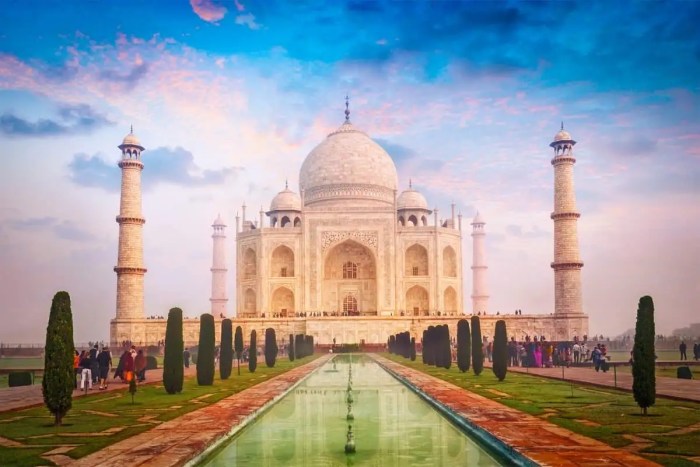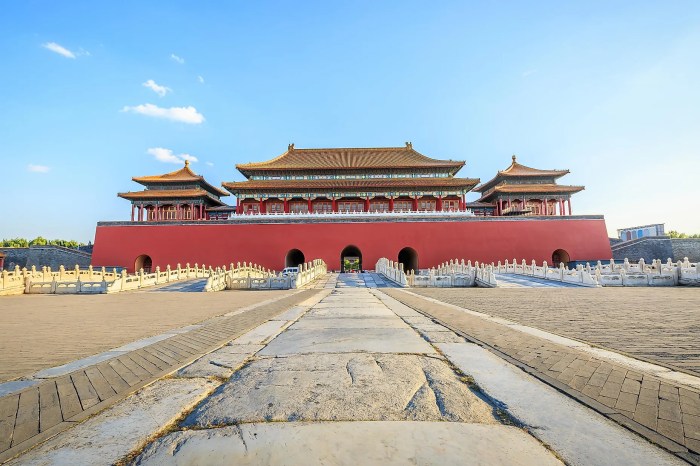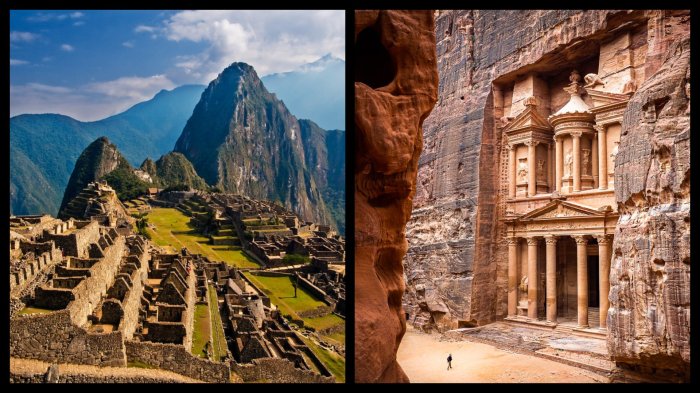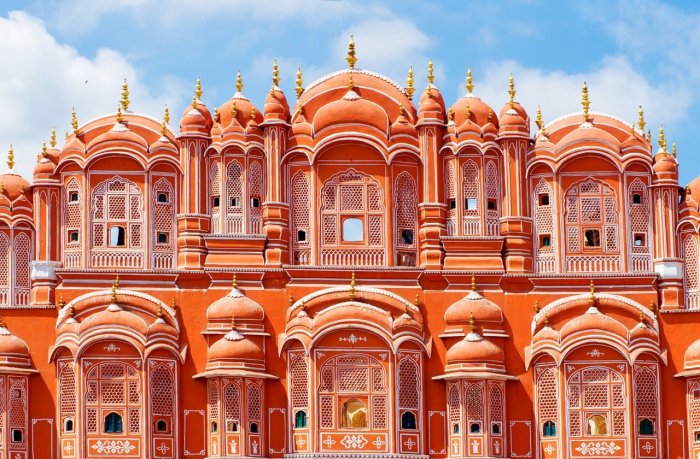UNESCO World Heritage Sites are a testament to the enduring legacy of human civilization and the beauty of the natural world. These exceptional places, recognized by the United Nations Educational, Scientific and Cultural Organization (UNESCO), represent the pinnacle of cultural and natural heritage, offering a glimpse into the rich tapestry of our planet’s history, culture, and biodiversity.
From the ancient ruins of Machu Picchu to the breathtaking landscapes of the Grand Canyon, UNESCO World Heritage Sites span the globe, showcasing the diversity and interconnectedness of our shared human experience. These sites serve as reminders of the importance of preserving and celebrating our heritage for generations to come.
Introduction

UNESCO World Heritage Sites are places of exceptional cultural or natural importance to humanity. They are designated by the United Nations Educational, Scientific and Cultural Organization (UNESCO) to protect and preserve these sites for future generations.
To be designated as a UNESCO World Heritage Site, a site must meet at least one of ten selection criteria. These criteria include:
Selection Criteria, UNESCO World Heritage Sites
- Represent a masterpiece of human creative genius.
- Exhibit an important interchange of human values over a span of time or within a cultural area of the world.
- Bear a unique or exceptional testimony to a cultural tradition or to a civilization which is living or which has disappeared.
- Provide an outstanding example of a type of building, architectural or technological ensemble or landscape which illustrates a significant stage in human history.
- Be an outstanding example of a traditional human settlement, land-use, or sea-use which is representative of a culture (or cultures), especially when it is vulnerable under the impact of irreversible change.
- Be directly or tangibly associated with events or living traditions, with ideas, or with beliefs, with artistic and literary works of universal significance.
- Contain superlative natural phenomena or areas of exceptional natural beauty and aesthetic importance.
- Be outstanding examples representing major stages of earth’s history, including the record of life, significant ongoing geological processes in the development of landforms, or significant geomorphic or physiographic features.
- Be outstanding examples representing significant ongoing ecological and biological processes in the evolution and development of terrestrial, marine, coastal and freshwater ecosystems and communities of plants and animals.
- Contain the most important and significant natural habitats for in-situ conservation of biological diversity, including those containing threatened species of outstanding universal value from the point of view of science or conservation.
Types of UNESCO World Heritage Sites

UNESCO World Heritage Sites are classified into four distinct categories based on their outstanding universal value:
Cultural Sites
These sites represent the tangible and intangible heritage of humanity, including monuments, buildings, and archaeological sites.
- Taj Mahal, India
- Great Wall of China, China
- Colosseum, Italy
- Machu Picchu, Peru
- Angkor Wat, Cambodia
Natural Sites
These sites encompass natural wonders, including forests, mountains, lakes, and deserts.
- Grand Canyon, United States
- Great Barrier Reef, Australia
- Mount Everest, Nepal
- Amazon Rainforest, South America
- Serengeti National Park, Tanzania
Mixed Sites
These sites combine both cultural and natural elements, showcasing the harmonious interaction between humanity and the environment.
- Petra, Jordan
- Yellowstone National Park, United States
- Uluru (Ayers Rock), Australia
- Plitvice Lakes National Park, Croatia
- Sigiriya Rock Fortress, Sri Lanka
Unknown Sites
This category includes sites that have been proposed for inscription on the World Heritage List but have not yet been evaluated.
Geographical Distribution of UNESCO World Heritage Sites

UNESCO World Heritage Sites are distributed across the globe, showcasing the rich cultural and natural heritage of different regions. The distribution of these sites varies significantly across continents and countries, reflecting the diverse history, geography, and cultural traditions of each area.
The majority of UNESCO World Heritage Sites are located in Europe, with over 500 sites. This is due to the region’s long history of cultural development and the preservation of its architectural and historical landmarks. Asia and the Pacific region follows with over 400 sites, showcasing the diversity of cultures and natural wonders in the region.
UNESCO World Heritage Sites are destinations of cultural and natural significance, offering a unique blend of history, architecture, and stunning landscapes. While these sites provide a glimpse into the past, they can also be a starting point for thrilling adventures.
For those seeking an adrenaline rush, extreme sports vacations combine the excitement of outdoor activities with the exploration of these iconic landmarks. Whether it’s rock climbing in Yosemite National Park or white-water rafting in the Grand Canyon, UNESCO World Heritage Sites offer a unique backdrop for unforgettable experiences.
Distribution by Continent
- Europe: Over 500 sites
- Asia and the Pacific: Over 400 sites
- North America: Over 200 sites
- South America: Over 150 sites
- Africa: Over 100 sites
- Antarctica: 7 sites
The distribution of UNESCO World Heritage Sites within continents also varies significantly. For example, in Europe, the majority of sites are located in Italy, Spain, France, and Germany, while in Asia, China, India, and Japan have the highest number of sites.
The geographical distribution of UNESCO World Heritage Sites provides insights into the cultural and natural heritage of different regions and highlights the importance of preserving and protecting these valuable assets for future generations.
Cultural Significance of UNESCO World Heritage Sites

UNESCO World Heritage Sites hold immense cultural significance, as they serve as custodians of unique and invaluable cultural heritage. These sites play a pivotal role in preserving and promoting cultural traditions, practices, and beliefs that have shaped human civilizations for centuries.
UNESCO’s recognition of these sites underscores their exceptional cultural value, fostering awareness and appreciation for diverse cultural expressions. By safeguarding these heritage treasures, we not only protect the physical structures but also the intangible cultural heritage associated with them, ensuring their transmission to future generations.
Examples of UNESCO World Heritage Sites with Unique Cultural Traditions
The following are notable examples of UNESCO World Heritage Sites that showcase unique cultural traditions and practices:
- Taj Mahal, India: This iconic mausoleum embodies the fusion of Islamic and Hindu architectural styles, reflecting the rich cultural heritage of the Mughal Empire.
- Great Barrier Reef, Australia: The world’s largest coral reef system, the Great Barrier Reef supports a diverse marine ecosystem and holds cultural significance for the Indigenous Australians who have lived in the region for thousands of years.
- Machu Picchu, Peru: The ancient Inca citadel of Machu Picchu, perched high in the Andes Mountains, offers a glimpse into the advanced architectural and agricultural techniques of the Inca civilization.
- Angkor Wat, Cambodia: This massive temple complex, built in the 12th century, is a testament to the architectural prowess and religious beliefs of the Khmer Empire.
- Timbuktu, Mali: A former center of Islamic scholarship and trade, Timbuktu preserves ancient manuscripts and traditional knowledge, showcasing the rich intellectual heritage of West Africa.
These UNESCO World Heritage Sites not only represent architectural wonders but also serve as living repositories of cultural practices, beliefs, and traditions that have been passed down through generations. They remind us of the interconnectedness of human cultures and the importance of preserving our shared heritage for future generations.
Natural Significance of UNESCO World Heritage Sites

UNESCO World Heritage Sites encompass a diverse range of natural wonders that hold immense ecological and scientific importance. These sites serve as critical habitats for endangered species, protect fragile ecosystems, and offer unparalleled opportunities for scientific research and environmental conservation.
UNESCO’s recognition of natural sites as World Heritage Sites ensures their preservation for future generations and promotes sustainable tourism practices that minimize ecological impact.
Exceptional Natural Beauty and Geological Formations
- Grand Canyon National Park (USA): A vast and awe-inspiring gorge carved by the Colorado River over millions of years, showcasing colorful rock formations and unique geological features.
- Uluru-Kata Tjuta National Park (Australia): Home to the iconic Uluru (Ayers Rock) and Kata Tjuta (The Olgas), two massive sandstone monoliths that dominate the arid landscape.
- Yosemite National Park (USA): Known for its towering granite cliffs, cascading waterfalls, and ancient giant sequoia trees, providing a breathtaking panorama of natural beauty.
Wildlife Habitats and Biodiversity
- Serengeti National Park (Tanzania): A vast savanna ecosystem renowned for its annual wildebeest migration, where millions of animals traverse the park in search of food and water.
- Galapagos Islands (Ecuador): A unique archipelago that inspired Charles Darwin’s theory of evolution, home to a diverse array of endemic species such as giant tortoises, marine iguanas, and sea lions.
- Amazon Rainforest (Brazil): The largest tropical rainforest in the world, containing an estimated 10% of the world’s known species and playing a crucial role in regulating global climate.
Conservation and Management of UNESCO World Heritage Sites
Preserving and managing UNESCO World Heritage Sites pose significant challenges due to their unique and often fragile nature. Conservation efforts aim to protect these sites from threats like environmental degradation, urbanization, and tourism while ensuring their authenticity and integrity.
Strategies for conservation include implementing management plans, conducting regular monitoring, and promoting sustainable tourism practices. Local communities play a crucial role in safeguarding these sites through traditional knowledge and cultural practices. International organizations like UNESCO provide technical assistance, training, and funding to support conservation efforts.
Challenges in Conserving UNESCO World Heritage Sites
- Environmental degradation due to climate change, pollution, and deforestation
- Unsustainable tourism practices leading to overcrowding and damage
- Urbanization and development encroaching on heritage sites
- Conflicts and political instability threatening cultural and natural heritage
- Limited resources and funding for conservation and management
Strategies for Conserving UNESCO World Heritage Sites
- Developing comprehensive management plans involving all stakeholders
- Implementing strict regulations to control tourism and development
- Promoting sustainable tourism practices and raising awareness among visitors
- Investing in research and monitoring to track changes and identify threats
- Encouraging local community involvement and traditional conservation practices
- Seeking international cooperation and funding for conservation efforts
Role of Local Communities and International Organizations
Local communities hold valuable knowledge and traditions essential for preserving cultural heritage sites. Their involvement ensures that conservation efforts are culturally sensitive and sustainable.
UNESCO World Heritage Sites are remarkable cultural and natural landmarks recognized for their exceptional value. While exploring these awe-inspiring destinations, consider indulging in a luxurious beach getaway at one of the world’s finest luxury beach resorts. After immersing yourself in the wonders of UNESCO World Heritage Sites, unwind and rejuvenate in opulent accommodations, savor delectable cuisine, and experience unparalleled pampering.
International organizations like UNESCO provide expertise, resources, and a global platform for sharing best practices. They facilitate collaboration between countries and mobilize support for the protection of World Heritage Sites.
Tourism and UNESCO World Heritage Sites

Tourism plays a significant role in the preservation and appreciation of UNESCO World Heritage Sites. It provides financial resources for conservation efforts, raises awareness about the importance of these sites, and fosters cultural exchange. However, it also poses challenges that must be carefully managed to protect the integrity and authenticity of these unique places.
The benefits of tourism for UNESCO World Heritage Sites are numerous. Tourism revenue can be used to fund conservation projects, such as restoring historical monuments, protecting natural habitats, and implementing sustainable tourism practices. It can also create employment opportunities for local communities, supporting economic development and reducing poverty.
Challenges of Tourism
However, tourism can also have negative impacts on UNESCO World Heritage Sites. Overcrowding, pollution, and infrastructure development can damage fragile ecosystems and cultural landscapes. Mass tourism can also lead to the loss of authenticity and cultural integrity, as sites become commercialized and tailored to the needs of tourists.
Balancing Tourism and Preservation
Balancing the benefits and challenges of tourism requires careful planning and management. Sustainable tourism practices must be implemented to minimize the negative impacts on UNESCO World Heritage Sites. This includes limiting visitor numbers, implementing strict regulations on development and activities, and educating tourists about the importance of respecting and preserving these sites.
When exploring UNESCO World Heritage Sites, planning an itinerary is crucial to maximize your experience. A well-structured travel itinerary template can help you allocate time wisely and prioritize must-see attractions. From the iconic Great Wall of China to the breathtaking pyramids of Egypt, UNESCO World Heritage Sites offer a glimpse into our shared cultural and natural heritage.
By integrating a travel itinerary template into your planning, you can ensure a memorable and enriching journey through these remarkable destinations.
It is also essential to involve local communities in the management of tourism. They can provide valuable insights into the cultural and environmental sensitivities of the site and help ensure that tourism benefits the community while preserving the integrity of the site.
Emerging Trends in UNESCO World Heritage Site Management

UNESCO World Heritage Sites are facing new challenges in the 21st century, including climate change, mass tourism, and globalization. In response, new trends in management are emerging, with a focus on sustainability, community engagement, and the use of technology.
One of the most important trends is the increasing use of technology to manage World Heritage Sites. This includes the use of remote sensing to monitor the condition of sites, GIS to map and analyze data, and virtual reality to create immersive experiences for visitors.
Another important trend is the increasing focus on sustainable practices. This includes the use of renewable energy sources, sustainable construction materials, and waste management systems. Sustainable practices help to protect the environment and reduce the impact of tourism on World Heritage Sites.
Finally, there is a growing recognition of the importance of community engagement in the management of World Heritage Sites. This includes involving local communities in decision-making, providing them with training and resources, and supporting their efforts to preserve their cultural and natural heritage.
Technology
- Remote sensing to monitor the condition of sites
- GIS to map and analyze data
- Virtual reality to create immersive experiences for visitors
Sustainable Practices
- Use of renewable energy sources
- Sustainable construction materials
- Waste management systems
Community Engagement
- Involving local communities in decision-making
- Providing them with training and resources
- Supporting their efforts to preserve their cultural and natural heritage
Ending Remarks

As we continue to navigate the challenges of the 21st century, UNESCO World Heritage Sites stand as beacons of hope and inspiration. They remind us of the resilience of human ingenuity, the interconnectedness of our planet, and the importance of safeguarding our shared cultural and natural treasures. By protecting and preserving these exceptional places, we invest in the future, ensuring that generations to come can continue to marvel at the wonders of our world.
Questions and Answers
What is the purpose of UNESCO World Heritage Sites?
UNESCO World Heritage Sites are designated to protect and preserve cultural and natural heritage of outstanding universal value for future generations.
How many UNESCO World Heritage Sites are there?
As of 2023, there are 1157 UNESCO World Heritage Sites in 167 countries.
What are the different types of UNESCO World Heritage Sites?
UNESCO World Heritage Sites are classified into three categories: cultural, natural, and mixed.
Who decides which sites are designated as UNESCO World Heritage Sites?
The World Heritage Committee, composed of 21 elected States Parties to the World Heritage Convention, makes decisions on which sites to inscribe on the World Heritage List.